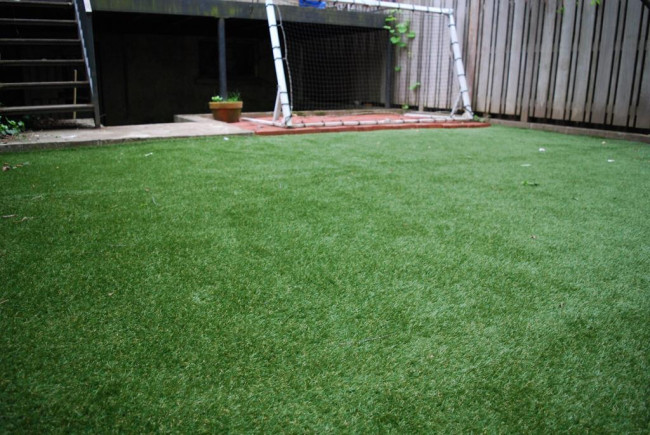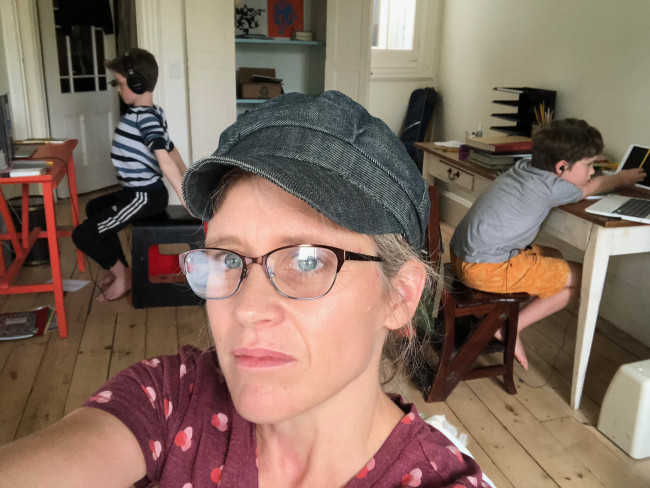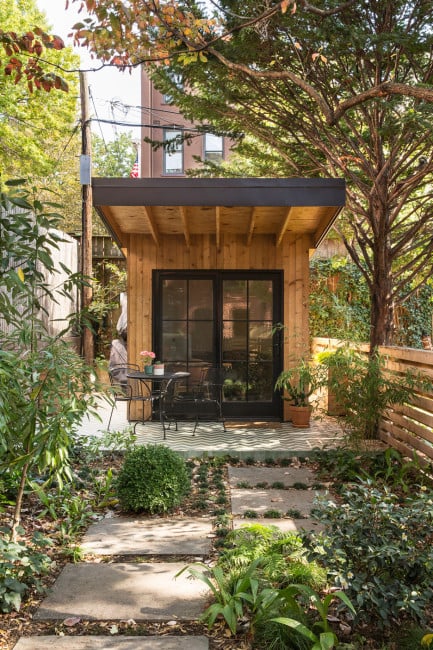Does artificial turf last? An update on our backyard after two years with fake grass
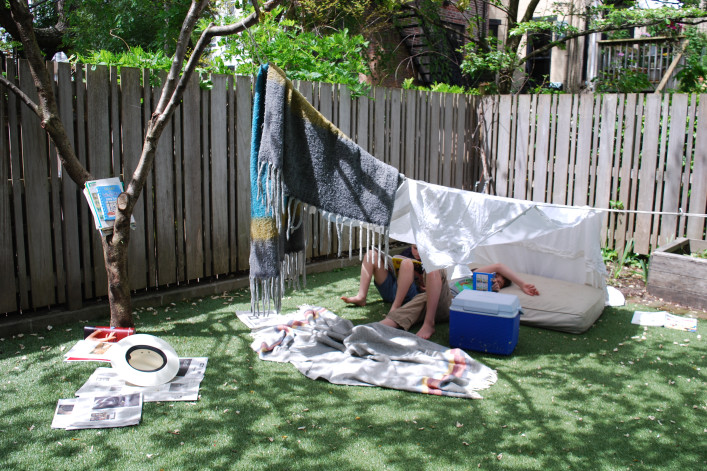
Making use of the backyard thanks to the artificial turf installation.
Emily Myers
If you’re considering fake turf for your backyard, you might be wondering how well artificial grass holds up over time and what kind to buy. I’m here to share my experience with what I think is a no brainer if you are looking for a shortcut to a green backyard.
It’s been two years since I installed artificial grass in the backyard of our Brooklyn rental. It transformed the use of our outdoor space and it was certainly helpful to have during the pandemic.
The turf is as low maintenance as it comes. I brush it occasionally but that’s all. We didn’t use infill and it’s flattened somewhat from use, as you might expect. I also didn’t opt for the highest quality turf (I spent under $3 per square foot) and did the installation myself. Even so, the turf has aged really well. Looking at pictures from the installation with comparable pictures two years later, what’s most notable is the color isn’t quite as fresh.
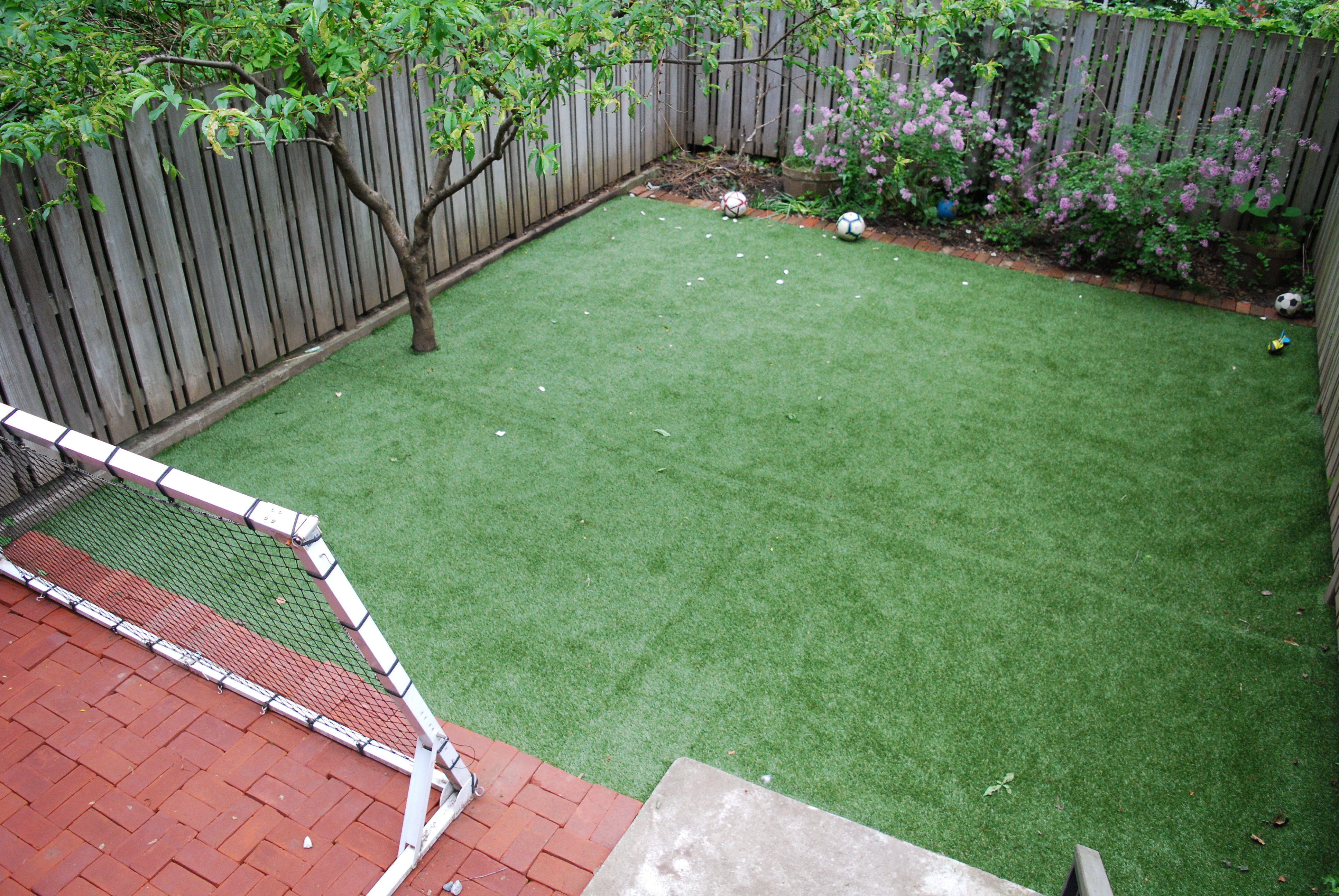
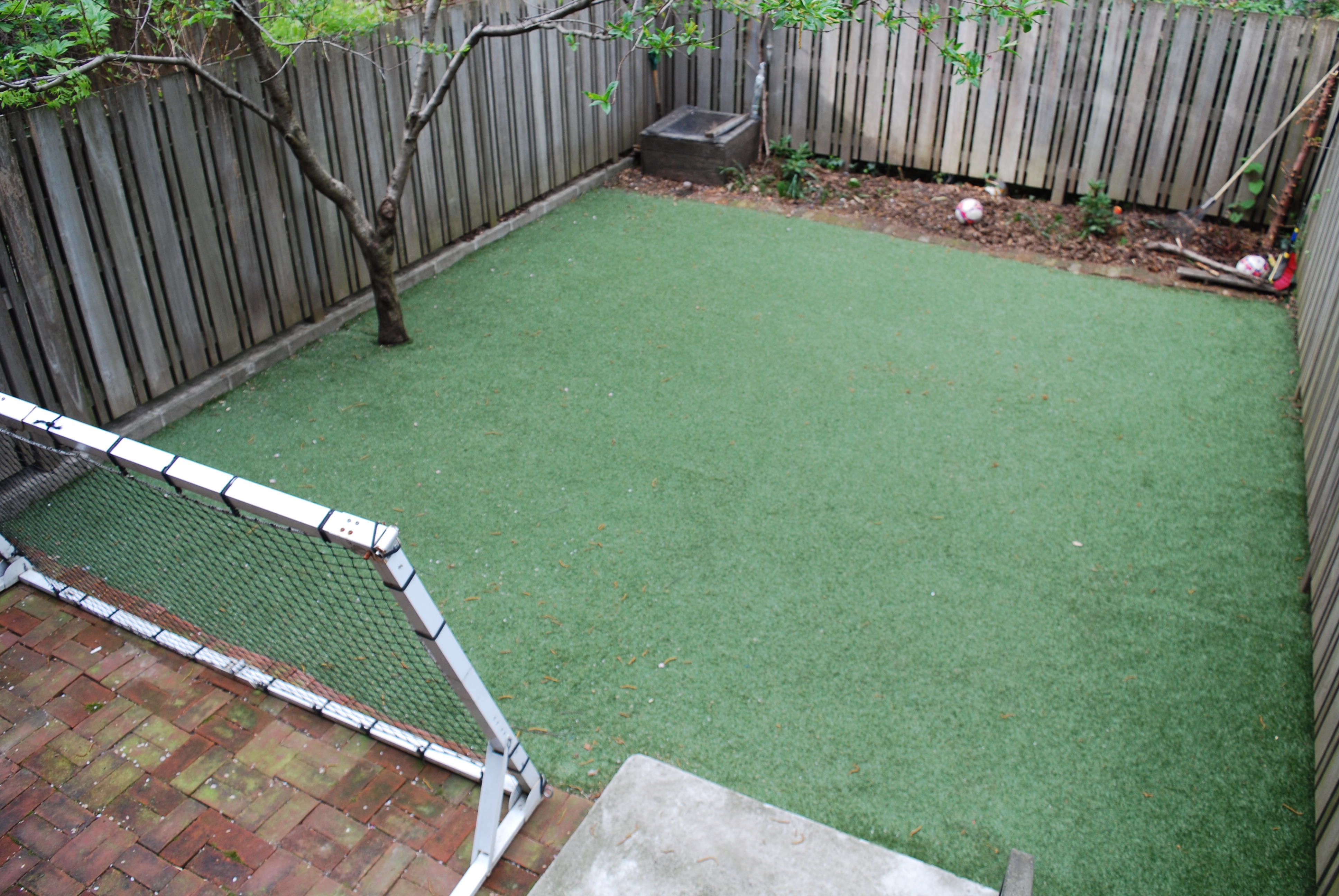
There are two issues I’ve dealt with as a result of my installation. The first was that the dog got hold of a seam and created a hole. The second is that foot traffic at the bottom of the stairs from the deck left a small indentation that collected water when it rained. Both of these issues were very easy to tackle—here’s how.
Dealing with a puddle
No doubt the shallow indentation would have been avoided with a professional installation. I didn’t notice it, except when it rained and a small puddle of water appeared. This wasn’t really a problem—it did eventually drain—but to eliminate any opportunity for mosquito breeding I bought 60 pounds of multi-purpose sand and decided to level off the area.
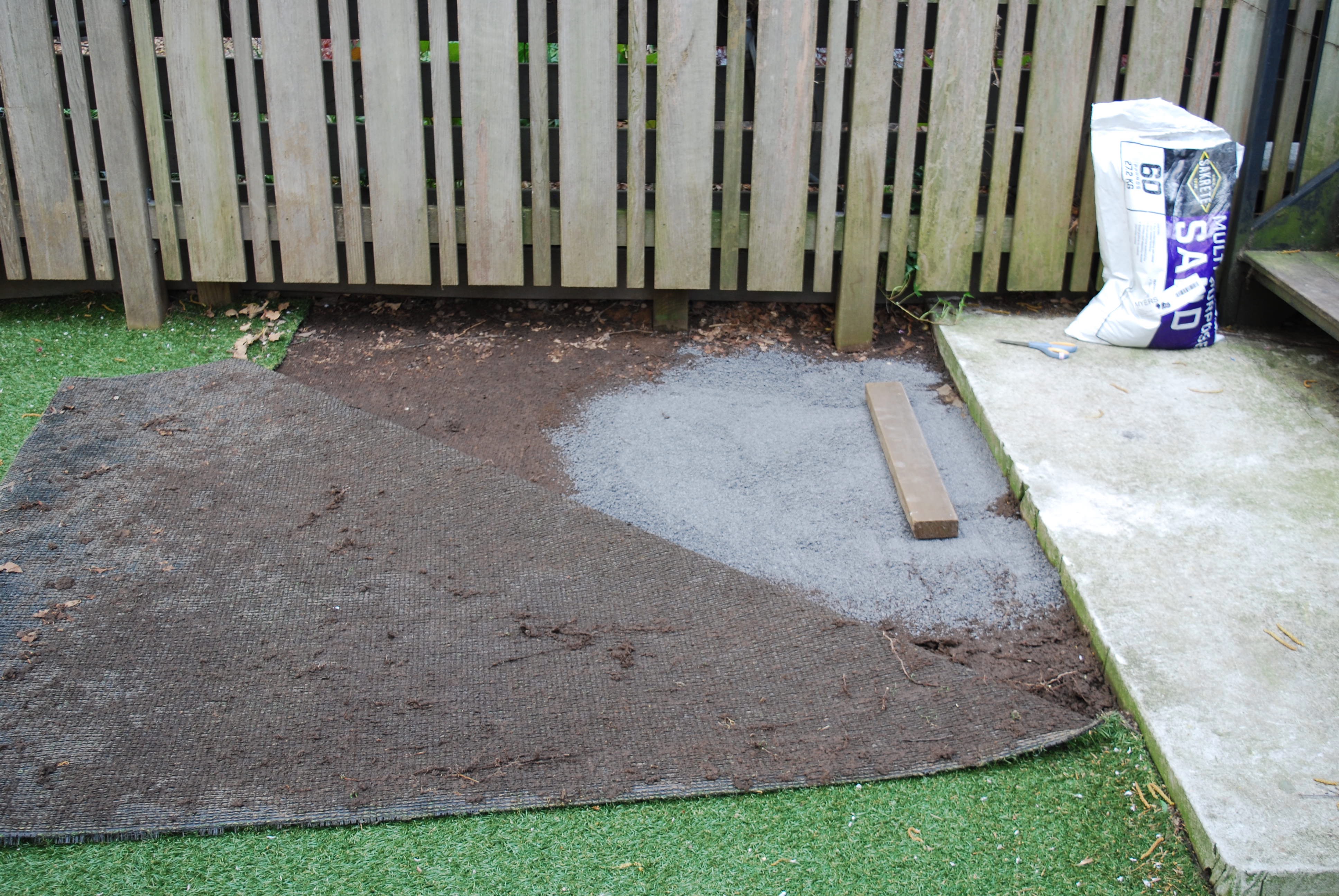
I folded back the grass, added and leveled the sand and then replaced the turf. It really was that easy.
A tip if you’re doing a DIY install for the first time is to identify any area which you think might get the most foot traffic and make sure you’ve put enough sand or gravel there to minimize this issue.
Repairing a seam
I had some hesitation about repairing the seam because it required cutting out a small rectangle in the middle of the yard. Luckily I’d kept some of the scraps of the original fake turf, so it only required patching a new rectangle onto the original seam with some glue.
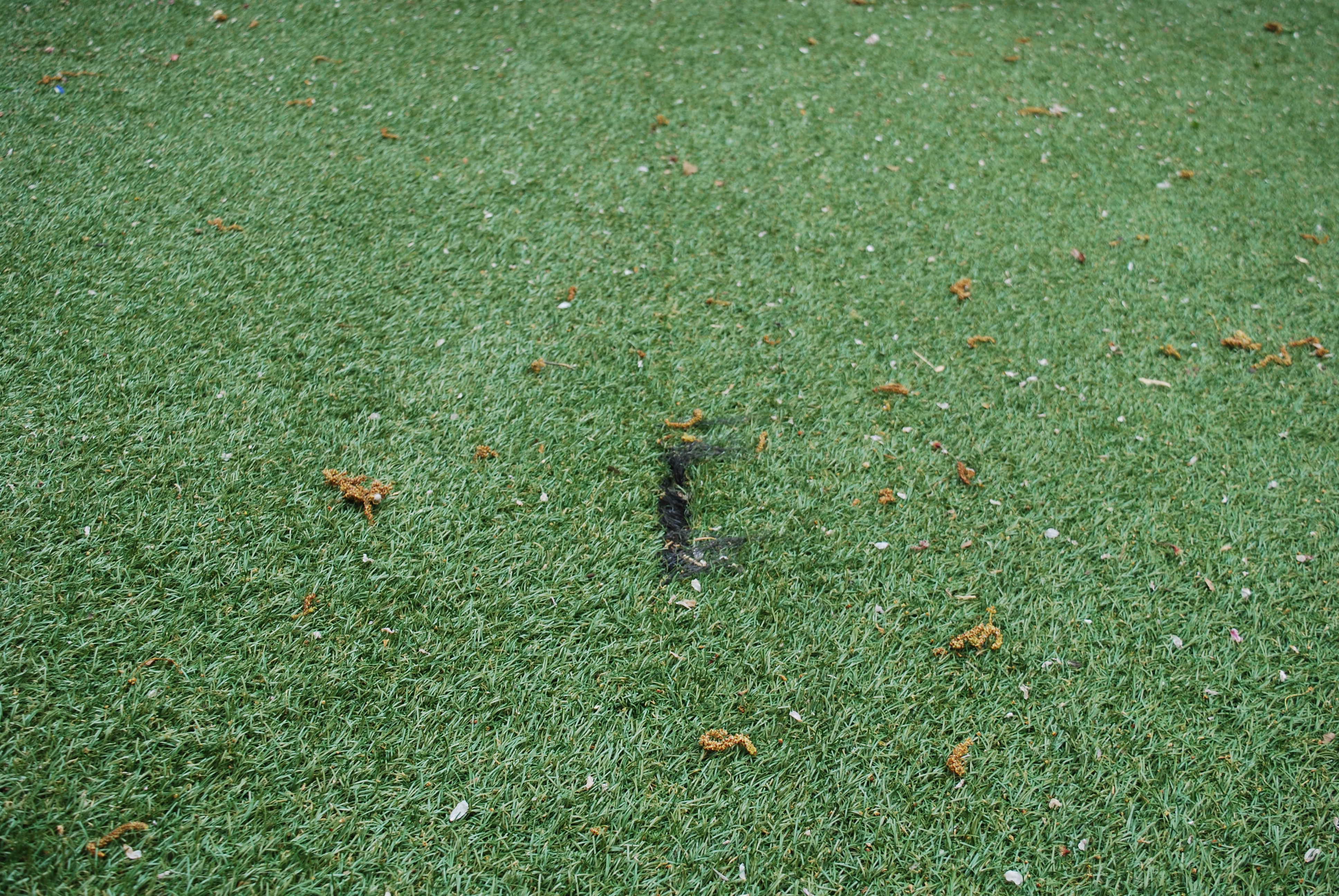
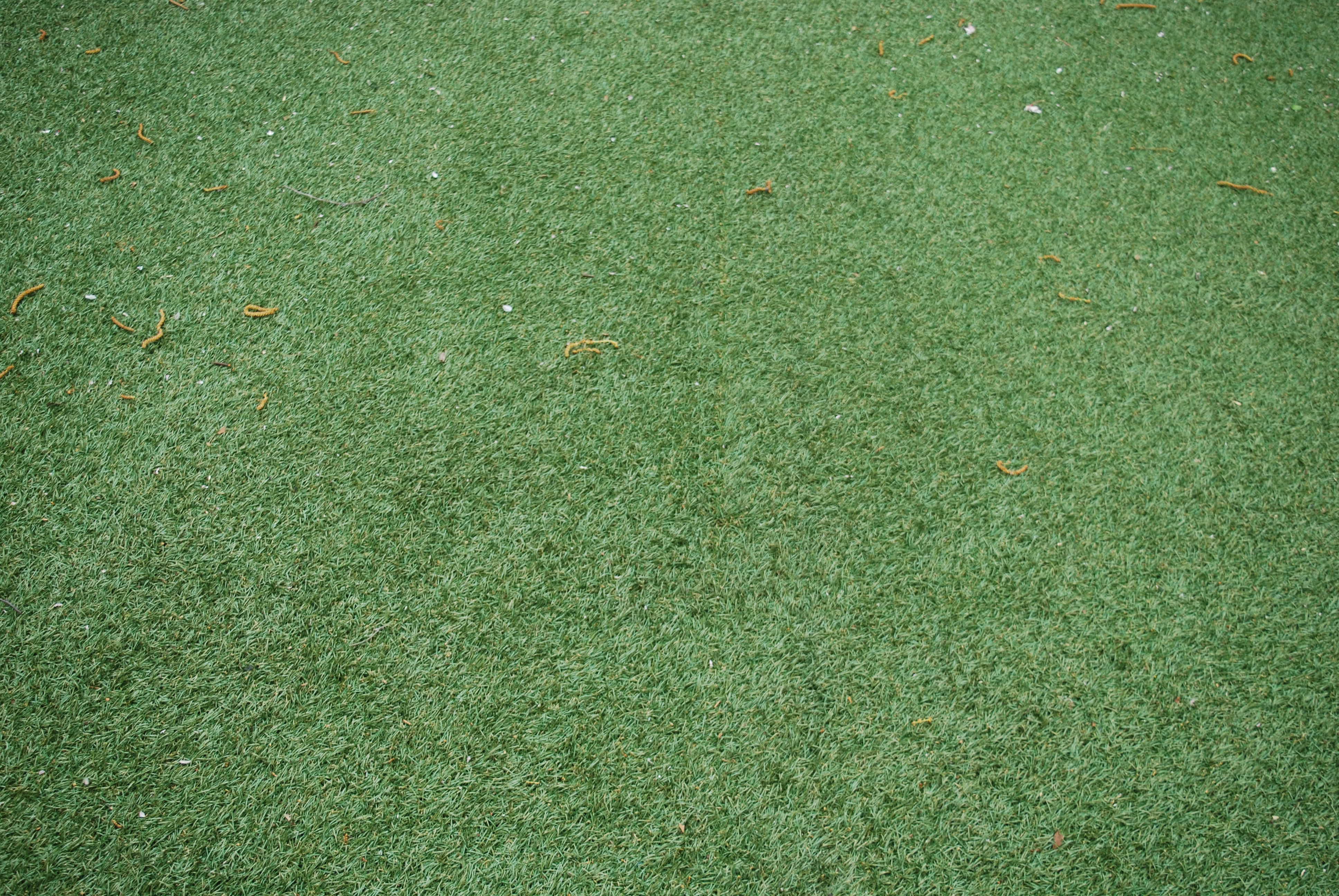
I cut the rectangle to the right size using a utility knife, put glue on the seam paper, which was there from the original installation and pressed the grass to the paper. I placed a brick on top for half an hour to make sure it was secure. For good measure I hammered in two eight-inch landscaping nails to make sure the grass stayed in place.
Both these issues took me less than 10 minutes to fix. I probably spent longer shopping for a quart of the artificial turf adhesive than I did doing the repairs.
Here’s another couple of photos to give you an idea of how the turf has aged:
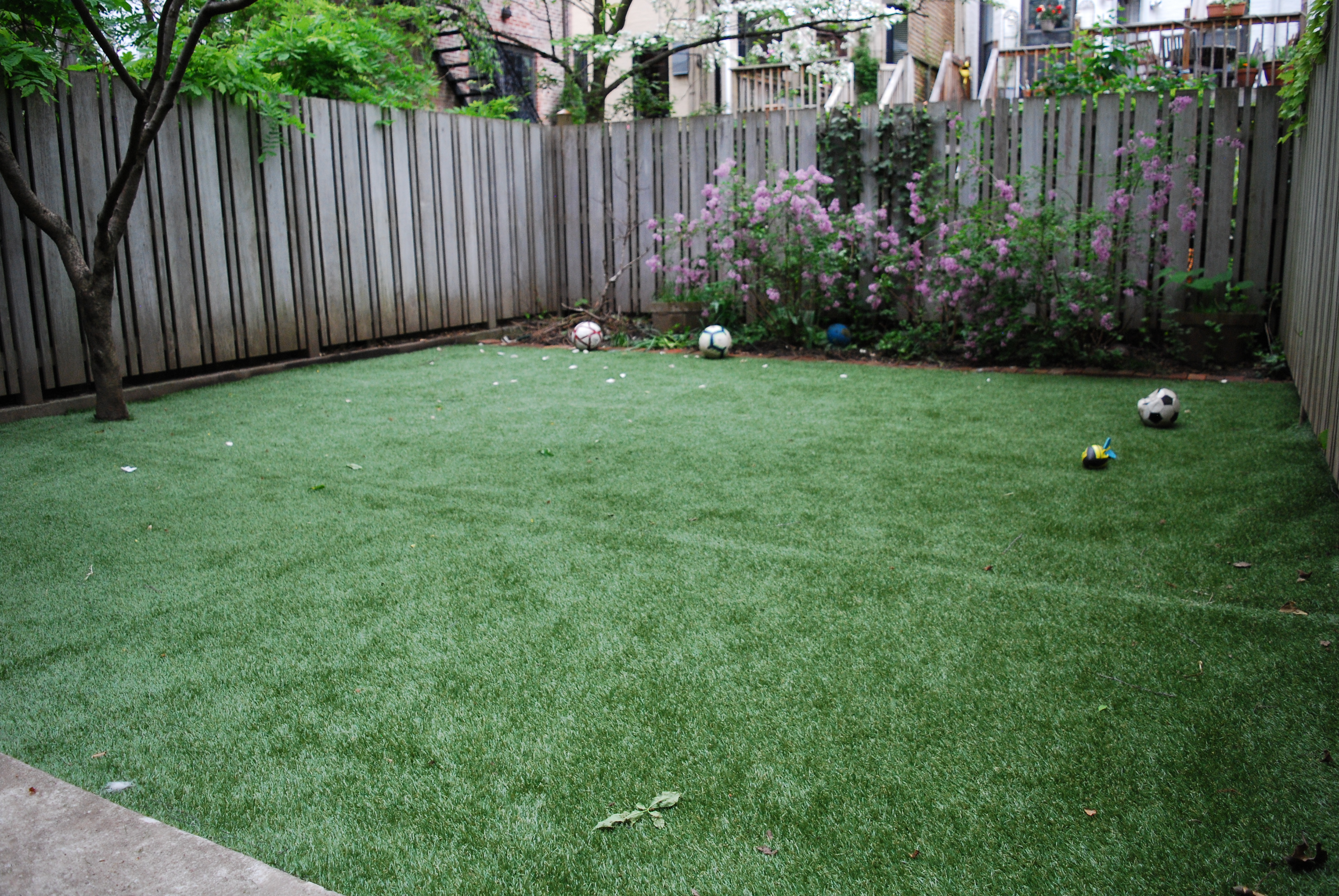
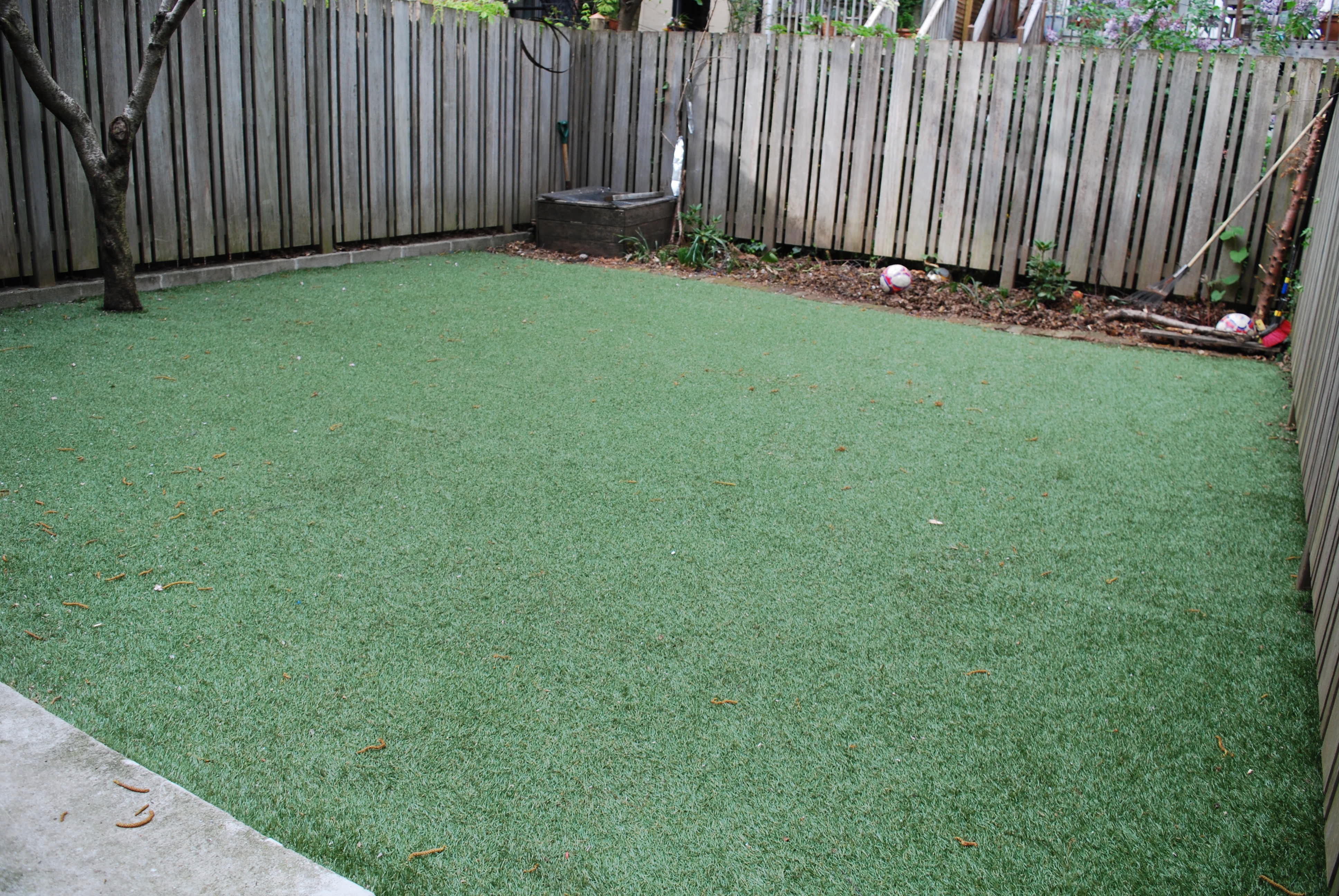
My advice to anyone installing fake turf would be to go for the best quality you can afford within your budget. However, from my experience, even the low budget turf holds up well. We didn't know we would be spending so much time at home in 2020 but the installation meant we used the backyard much more than we would have otherwise.



















